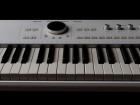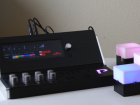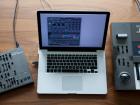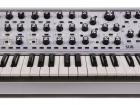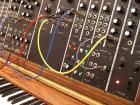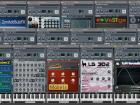How To Make Soft Synths Sound More Analog

Post date:
While it is true that nothing could ever truly compare to owning your very own vintage analog synth, this is unfortunately not an option for many people. Instead, they have to make do with soft synths that offer digital recreations of actual synthesizers. While there has been a lot of improvements to soft synths in recent years, resulting in them sounding better than ever before, for many purists it is still not enough. However, there are ways and means to make your soft synths sound a bit more analog instead of clinical and cold. Whatever your reasons for not owning an analog synth, here are a few tips and tricks that could transform the sound of your soft synths.
Beat Tones
Adding a very subtle phasing effect to your synth audio can also provide it with a more analogue style sound. The easiest way to accomplish this is via beat tones. For those unfamiliar with the process, it is basically an interference pattern between identical sounds that have slightly different frequencies. The result is that listeners perceive a periodic variation in the volume of the sounds. The effect can be accomplished from within your DAW by using two identically pitched sounds and then just detuning the oscillators slightly. Even with very subtle detuning you’ll be able to hear this effect.
Saturation
When working with soft synths in a DAW, it is usually a good idea to stay within the 0dB limit in order to prevent any harsh clipping from occurring. However, many classic analog synth tracks were mixed on analog mixing desk where producers were able to go beyond 0dB. Fortunately, it is possible to recreate this type of saturation on a DAW by making use of tools that are created specifically for the task. Products such as Decapitator are worth checking out, or if you are on a tight budget try Saturation Knob, which is a free plug-in by Softube.
Bring The Noise
Those who are familiar with actual analog synthesizers from the classic era will know that some of them featured a noise generator. A lot of musicians use these white noise generators when working with synths such as the Sequential Circuits Prophet-5 to add some brightness to their sounds. If your soft synths are lacking this high end presence you can make use of the white noise trick without having to resort to EQ. There are numerous ways to generate white noise with software such as MNoiseGenerator, while others like Serum goes one step further by offering analog modeled noise sources. Noise was a definite component of the analog era and introducing some to your digital mixes can go a long way towards recreating a more vintage sound.
Layering
In addition to layering on some noise to enhance the analog sound of your soft synths, you can also mix together two synth sounds with subtle difference to get more unique results.
Distortion
Just like noise, distortion was also common in the early days of analog synth recording. To recreate the effect in the digital age, some musicians run their synth through a tape cassette or 8 track to give it some more warmth before running it back into their DAW. Don’t worry if you don’t have the hardware though, as you can also achieve similar results through the use of plug-ins. For example, Toneboosters features an accurate tape simulator as part of their BusTools 3 package.
Amp Modeling
If your soft synths are sounding a little too flat even if you’ve tried making use of distortion, then amp modeling might be just what you need for a more dynamic sound. Depending on the amp or speaker cabinet combination you use, you’ll find that with some tweaking that your lead synths may sound a lot more organic. When it comes to amp modeling you can either opt to make use of a real amp if you own any or go the digital route by opting for a plug-in. Something like Vintage Amp Room from Softube has a free 20-day demo that you can try out to hear if you are able to achieve the sound that you want. AmpliTube 4 from IK Multimedia also offers a great selection of amps to play around with while ACE from Shattered Glass Audio is a faithful digital version of an all tube 1950s amp.
Conclusion
The bottom line is that even with soft synths it is not impossible to give them a more analog sound if you spend enough time tweaking your settings. The soft synths that are available these days often offer very faithful recreations of the analog synthesizers that they are based on, which means it is getting harder to distinguish between the two unless you are familiar with both. Having said that, the only way that you are truly going to get that imperfect analog sound if you are a purist is by investing in a vintage analog synth of your own. What are your thoughts? Is it analog all the way for your recordings or do you have any tips to warm up your soft synhs?
